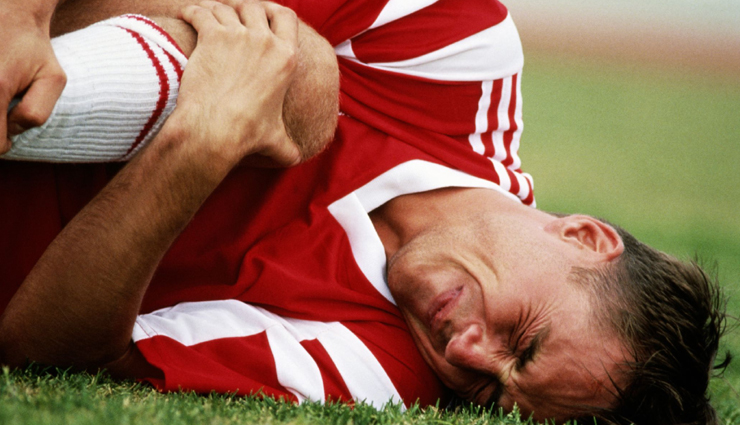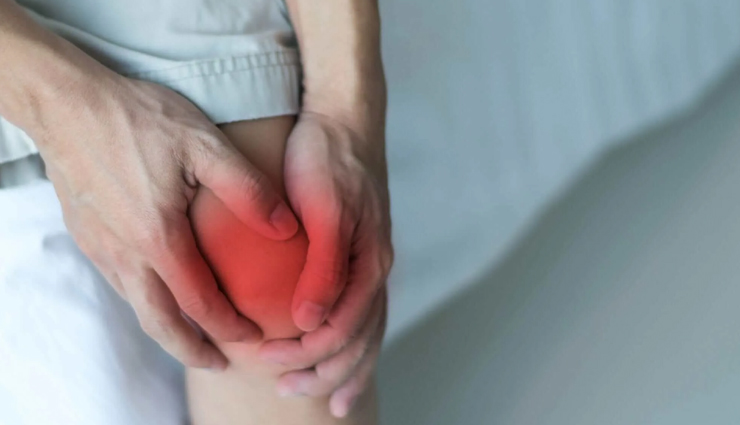- Home›
- Healthy Living›
- Here Are Some Most Common Knee Injuries You Might Suffer From Falling
Here Are Some Most Common Knee Injuries You Might Suffer From Falling
By: Priyanka Maheshwari Fri, 09 Oct 2020 12:03:07

Knee pain caused by a fall can signal wounds as minor as a wound that you can often think that you can treat at home too as serious as a torn tendon or a fracture that may expect the medical procedure to cure it.
Giving close attention to the seriousness and area of the knee injury you are encountering can assist you in deciding the sort of injury you’ve sustained and whether medical consultation is essential.
Remember that knee injury is related to trouble in standing straight or difficulty in walking should be viewed as a medical emergency immediately.
You might often be confused regarding knee injuries from falling and so we decided to discuss and find out more about knee wounds that can happen after a fall and how to differentiate between minor wounds that can be treated at home and more extreme ones that require immediate medical consultations.

* Abrasion Or A Scrape
Abrasion is another term for a scratch. It is one of the most common knee injuries that can occur after a fall. This happens when the skin rubs against a harsh surface, for example, black-top or concrete.
A minor abrasion takes off only the external layer of skin (epidermis) and can be treated at home. Serious abrasion areas that include bleeding and more layers of the skin may require a medical consultation to recover steadily.
* Laceration
A laceration is a cut or a type of puncture wound that causes a tear or opening in the skin.
On the off chance that you fall and land on something sharp like a nail, you can end up with a laceration. Like abrasion spots, laceration can be minor with almost no bleeding or can be severe that requires immediate medical treatment.
Laceration brought about by rusty items, for example, a nail, may likewise put you in danger for tetanus. Look for an immediate medical consultation if that happens by chance.
* Contusion
A Contusion or wound is a very common issue if you fall on a hard surface by chance. A contusion is another knee injury that can occur after a fall.
The impact of contusion can cause a blood vein or capillary in the skin or muscle underneath to leak blood in its surrounding region and can cause that area to become blue-black in color.
A contusion is normally treated at home with rest, ice, elevation, and a counter anti-inflammatory medication [such as ibuprofen] as needed.

* Sprain
A knee sprain happens when one — or more number — of the tendons in the knee is overstretched.
A tendon is a structure that connects one bone to another. In case you fall hard or your knee is struck by something heavy and powerful — think about a football tackle — you may encounter a knee sprain.
* Torn meniscus
The meniscus is a rubbery bit of ligament that sits in the middle of the femur and tibia and assists with padding and backing the two bones.
A meniscus tear normally happens when making a sharp turn in sports, for example, b-ball or football, but again a hard fall can also bring about a meniscus tear.
Some meniscus tears can be dealt with easily(without medical procedure); in any case, tenacious pain or severe swelling might be signs that you need an operation to treat your torn meniscus. In that case, do not panic and consult your doctor immediately.
* Ligament tear
There are two types of ligaments in the knee:
Quadriceps ligament: The quadriceps ligament connects the quadriceps muscle in the front of the thigh to the head of the patella (kneecap)
Patellar ligament: The patellar ligament connects the lower part of the patella to the tibia (shinbone)
Patellar ligament tears are more normal, and the two wounds can result in knee injuries from falling.

* A torn in the ligament
The knee contains four types of ligaments that connect the tibia to the femur (thighbone) and allow the knee to move forward, or in reverse, and pivot side to side:
An anterior cruciate ligament (ACL)
A posterior cruciate ligament (PCL)
Medial collateral ligament (MCL)
Lateral collateral ligament (LCL)
A high-impact injury, for example, a fall or a hit to the side of the knee can make at least one of these tendons tear.
The medical procedure is frequently important to fix a torn in the ligament. Without proper care, a torn tendon can lead to persistent pain and the disability of the harmed knee.
* Knee dislocation
A dislocated knee happens rarely, however, it’s an intense medical condition and requires immediate clinical consultation with a doctor.
Knee dislocations typically happen following high-energy wounds, for example, a car accident and or a fall from a height so on, yet low energy wounds can happen and push the thighbone out of the alignment with the shinbone causing a separated knee.
Medical complications, for example, vein and nerve injury are common after a dislocated knee and require quick clinical consultation.





